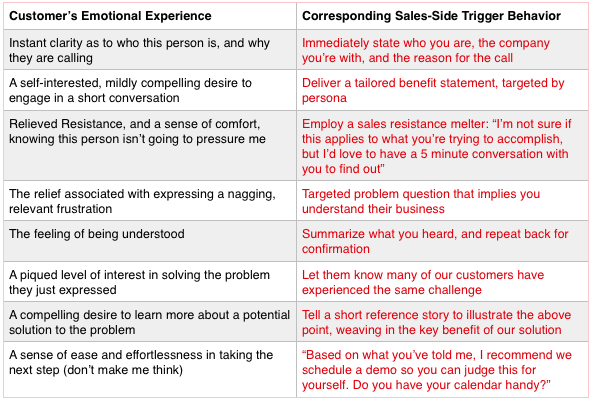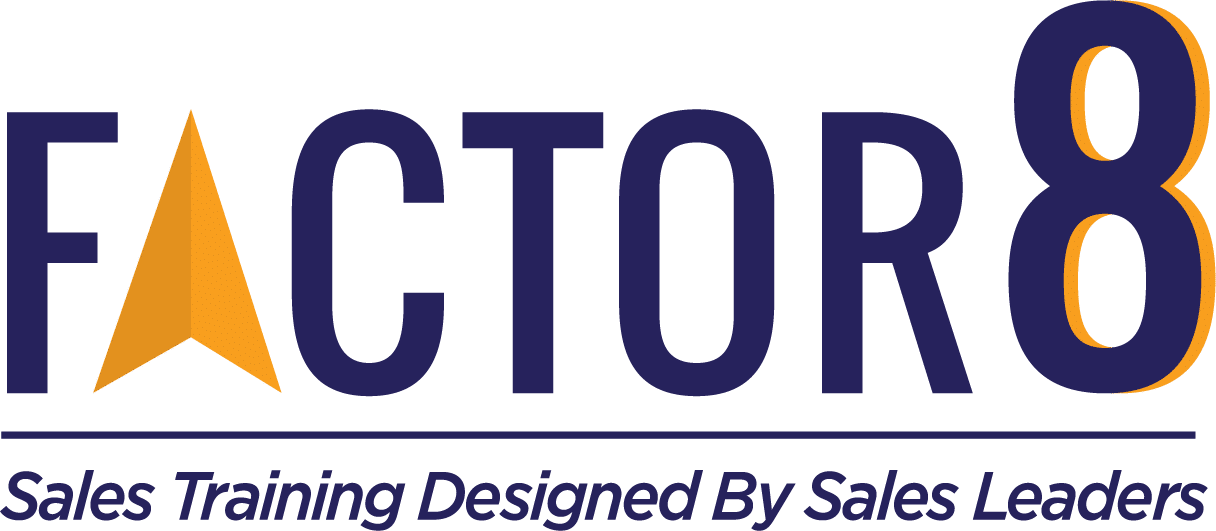How to Remove Friction From Your Inside Sales Team’s Call Flow
Some of us call them a “call flow,” some call them a “score card,” others may have a different name.
In any case, a “call flow” is usually defined as the conversation process your sales reps should follow from beginning a call, all the way to bringing it to a successful end.
That typically includes a sequenced list of well-designed sales behaviors reps should execute. These are our “performance drivers.”
It often also includes a list of “negative” behaviors you want to ensure your reps are not doing. These are drivers of underperformance, such as using too many “filler words,” talking 51% of the time, or heaven-forbid, cursing.
While most of us are on the same page as to what a call flow is, the majority of us are still designing them backwards, leading to a ton of unnecessary friction between your reps, and your buyers.
What do I mean by “backwards?”
Well, as sales leaders, when we design a “call flow,” we typically list out a sequenced list of sales behaviors, from start to finish, based on what we think is most effective.
Starting your call flow design by listing sales-side behaviors first, is backwards.
Designing a call flow the frictionless way requires you to start on the other side of the coin: What emotional experiences do we want our customers to have over the course of a call?
It requires you to “reverse-engineer” your call flow, by first starting with the customer’s emotional journey.
We outline this in detail, before ever defining the sales-side call flow.
Then – and only then – do we design a sequenced list of sales behaviors designed to trigger and create the customer-side emotional experience we have laid out.
Let me give you an example.
The typical sales leader is going to design a call flow from the sales perspective, and it may look something like this:
- State your full name, and company name from the outset
- State the reason you’re calling
- Deliver a compelling benefit
- Ask permission to ask them questions
- Execute our 7-part line of questioning
- Make the recommendation for a demo-appointment
Simple enough. But designed backwards. It’s designed with “sales lenses” on rather than “customer lenses.”
What I’m suggesting is this: first – before you do anything else – create a “list” of the emotional experiences you want your buyer to “travel through” over the course of a call.
Here’s an example:
- Instant clarity as to who this person is, and why they are calling me
- A self-interested, mildly compelling desire to engage in a short conversation
- Relieved resistance, and a sense of comfort, knowing this person isn’t going to pressure me into anything
- The relief associated with expressing a nagging, relevant frustration
- The feeling of being understood
- A piqued level of interest in solving the problem they just expressed
- A compelling desire to learn more about a potential solution to the problem
- A sense of ease and effortlessness in taking the next step (i.e. don’t make me think too much)
Ok, now we’ve started on the right foot (the customer’s).
Once we have this “call journey” outlined, we can now reverse-engineer our call flow in a way that triggers that customer emotional experience we’ve just designed.
Here’s what that would look like:

The final resulting call flow is subtly different from the original “backwards” one, but incredibly more powerful, because it starts with the buyer’s experience, and reverse engineers the sales process.
Doing this removes unnatural friction from sales calls.
Article was written by Chris Orlob

